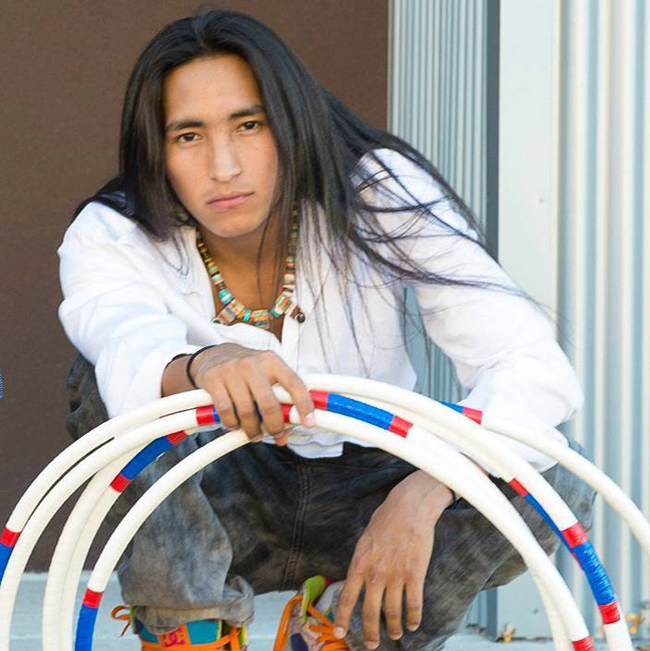And what an opening ceremonies they were!

By Laura Robinson
The ceremonies started with the drum and then dancers, dancers and more dancers. The Mississauga of the New Credit, Six Nations, Huron-Wendat and the Metis Nation of Ontario took to the stages at the SkyDome on July 10, for the opening ceremonies of the 16th Para-Pan Am Games. Out of this great group of dancers came the hoop dancer as eagle—a unifier, portraying the way in which First Nations of the Golden Horseshoe came together for this celebration. The role went to Nakotah Larance, seven-time world hoop dance champion from Flagstaff, Arizona.
As four of the Mississaugas went to the four directions on Stage 1, Ontario’s Metis Nation bring home their hunt on Stage 2, followed by Six Nations who enacted the Sky Woman creation story on Stage 3. Finally Stage 4 introduce the Huron-Wendat with women growing food.
But since these Games are taking place in the most multi-cultural city in the world, the dancers were also joined by so many others in a big “pow-wow carnival”; Caribbean, Latin American, Ukranian, Scottish…until there was one big party on centre stage, all to tunes played by DJ Shub (Dan General), a former member of A Tribe Called Red of Six Nations. When all the dancing is done, the hoop dancer remains.
From here we are taken by video to Toronto’s Jane/Finch corridor where Carleton Chambers, one of the members of the men’s 4×100 Olympic gold medal team from the 1996 Atlanta Olympics runs with the Games torch. We are taken through the streets of Toronto as he passes the torch to the other gold medalists until the anchor man and Olympic and World Champion—Donovan Bailey—enters the stadium via the roof with the Games torch. All four members of that team immigrated to Canada from the Caribbean and came together on centre stage—a perfect choice to transport a torch symbolizing the comradery of the Pan American countries.
From here was the parade of nations—another dance fest—there is nothing like the Latin American and Caribbean countries to make everything into a carnival/fiesta. When the Canadian team entered the SkyDome nearly exploded.
But the messenger would return again—as the eagle, not a hoop dancer. He danced to one of the caldrons and sets it on fire, then another and another. His presence awakens the Guardians of Sports, children in the form of students of the National Ballet School, Bear, Caribou, Owl and Woodpecker. He was eventually joined by opposing lacrosse teams/hip hop dancers—warriors played by members of Cirque du Soleil. Fire lights the stage, connecting everyone, but is eventually extinguished by a water bomber—a Canadian invention and so very timely given what our western neighbours are experiencing this summer.
Next up were people tuning into an old radio—yet another Canadian invention as love tunes emit and another Guardian of sport appears with yet another Cirque du Soleil acrobat. She is joined by the Cirque du Soleil troupe doing their death defying magic. Eventually the train enters—dubbed a train for life. Unfortunately the creators of this part of the performance do not know the real history of the railway in Canada and how it was used as an excuse to evict First Nations off thousands of kilometres of their own land.
The ceremonies wrapped up with the flame appearing again, passed between a number of prominent Canadian athletes until it reached Dana Wright, member of the Canadian Olympic 1984 4 x 400 silver medal winning relay team. She passed it to team members Charmaine Crooks, Jillian Richardson, Molly Killingbeck and Marita Payne-Wiggins, whose son just happens to be the outstanding new NBA player Andrew Wiggins. Like their male counterparts from the 1996 Olympics, all four of these outstanding runners have roots in the Caribbean. Wiggins takes the torch outside and meets yet another NBA player, Steve Nash who steps up to cauldron and lights it on fire, surrounded by fireworks, and the Games begin.


